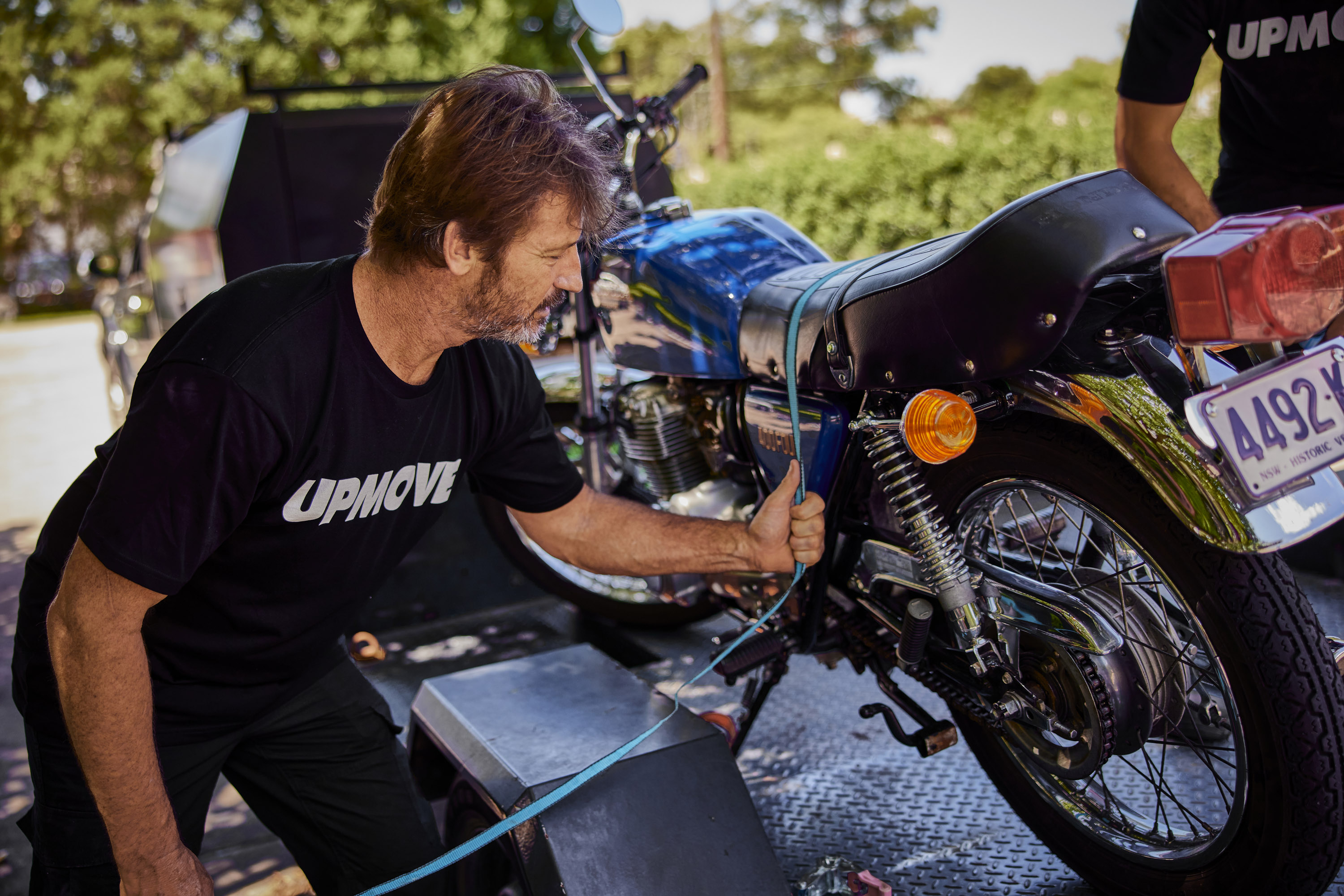How to Transport a Motorcycle (Complete Guide)

There are sound principles that apply to save you time and money when it comes to motorcycle transport. We’ve created this guide to make the process seamless as possible.
We’ll take you through the advantages and potential disadvantages of the various motorcycle transportation options, whether you are doing it yourself, or using a specialist moving company. With this guide you can avoid common problems and prepare your bike correctly.
Moving the bike yourself or using a transport company?
These are your two options, and below, we’ll break down each.
Moving the bike yourself
If you own a ute, van or a vehicle with a tow hitch, you can transport a motorcycle yourself. This can be an excellent solution for shorter-distance trips if you have experience securing a motorcycle and driving with the extra weight.
Remember that you may also have limited visibility at the rear as the motorcycle may obstruct your view and trailers require additional awareness when changing lanes on the highway or joining from junctions.
Moving a motorcycle yourself may seem like a cheaper option, and it can often be for shorter distances. However, if the move is interstate or a long distance, a motorcycle transport company will usually work out more cost-effective as they’re moving multiple motorcycles simultaneously.
Using a transport company
The good news is that there are several motorcycle moving companies across Aus; however, ensuring you use a reputable and reliable one is more challenging.
There are a few things to help you make a decision and watch out for:
- Read their reviews, both on the website and on Google
- Get multiple quotes to make sure you’re getting a fair price
- Check they have insurance
A quick and easy option: You can use a website that sources multiple quotes from vetted and trusted motorcycle transport providers in one request, it’s called Upmove.
When moving a motorcycle over a long distance, outsourcing the move usually makes sense cost-wise as it saves you fuel and multiple days on the road going there and back.
Preparing your motorcycle for transport
Once you’ve washed and dried your motorcycle, thoroughly survey any damage or scratches, document these, and take images with your phone as corroborating evidence. It’s essential to verify the condition of your motorcycle before it is transported, preventing any conflict about the condition it arrives in, at its delivery point.
The safest option for a bike to transport, is in a crate or a covered trailer. But what if your bike is travelling in an open trailer, or on the back of a ute? Should you use a bike cover? It’s a debate among riders, but bike covers are usually shaped and designed for static use, not on the back of a ute or trailer, at highway speeds. Not matter how meticulously you fit the, they can suffer wind buffeting.
Motorcycles need to travel in ‘clean’ trim. Get out the tools and remove all non-OEM accessories, categorising bolts with their mounting accessories into marked plastic bags or containers to prevent frustration when reattaching them.
Be mindful of how much fuel you’ll need at the delivery point. If you are transporting for a weekend ride or event, make sure the tank is adequately full to ride on arrival. If there is convenient refuelling close by the delivery point, you can transport with a low fuel load, which can reduce the bike’s centre of gravity and make it easier to load and unload.
Do you need additional insurance?
Even the most reputable motorcycle transport companies can suffer an unfortunate event or issue en route. The cost of escalating your insurance coverage for the few days involved in motorcycle transport is negligible, especially compared to the payment for uncovered damage.
Before any motorcycle is loaded, ensure that your coverage has been comprehensively updated for any eventuality. It’s always best to be over-insured for transport damages instead of having to quibble when something has gone awry after the fact.
What to avoid when transporting yourself
Ratchets and looping points can be tricky for the inexperienced, and although rubbing or vibration issues are never present when loading a motorcycle, that doesn’t mean they won’t happen once you get moving. At cruising speeds, a few hours into the journey, you could suffer a flailing ratchet strap end, creating a lot of avoidable cosmetic damage to your motorcycle.
Dropping your motorcycle is a nightmare for all riders, and no matter how confident you feel, don’t overestimate your ability to control a motorcycle for loading or rigging if it’s something you do irregularly. When in doubt, wait for a mate or someone else to assist. This is especially important when loading onto a higher surface, like the back of a ute.
To summarise
Approach motorcycle transport like you would a great ride. Failing to prepare is preparing to fail, being prepared can avoid simple errors under pressure, which often prove very costly.
For transport close to home, it’s often cheaper to rig up the ute, or rent a trailer, and do it yourself. But when a motorcycle needs to journey many hours, or out of state, it can be smarter to use a transport specialist. Don’t let the allure of that dream bike, on sale in another State, or an amazing riding experience 1000km away, deter you from using bike transport to make it happen. There are options and they could be a mere screen tap or two away from fulfilling your needs.






